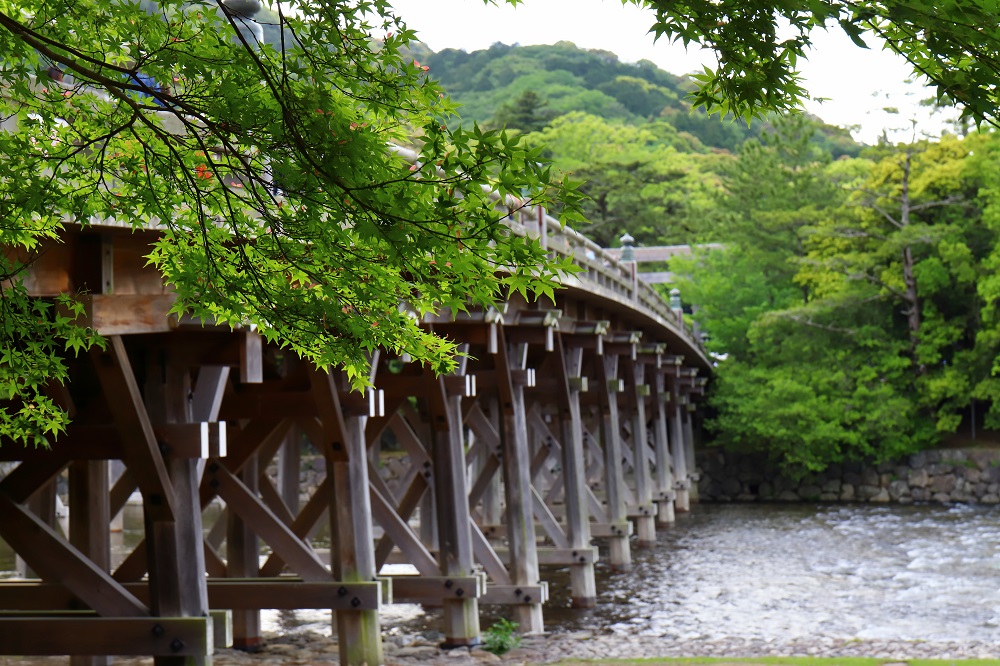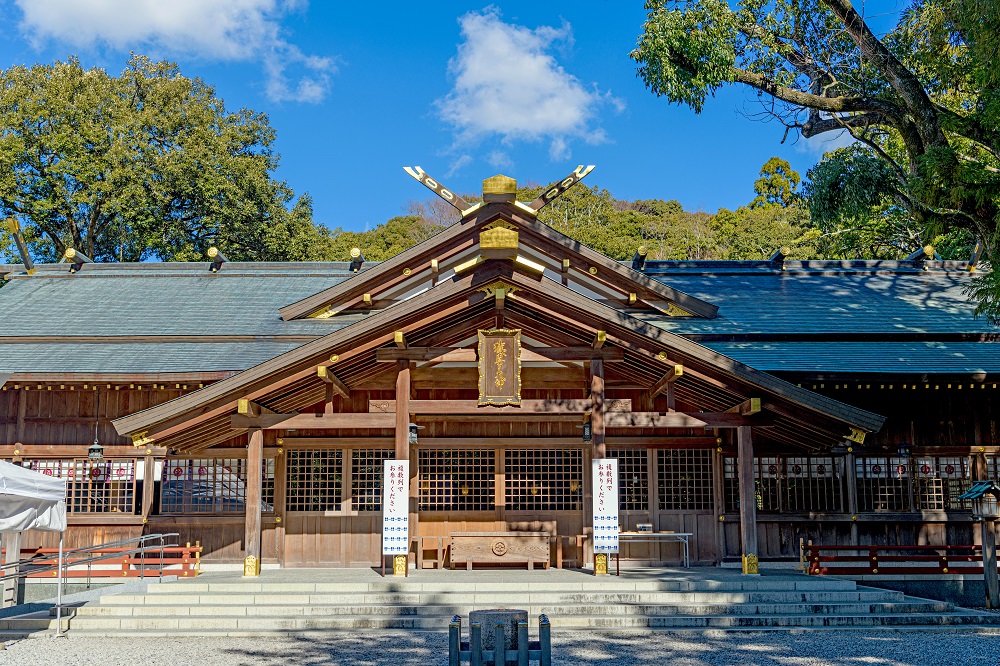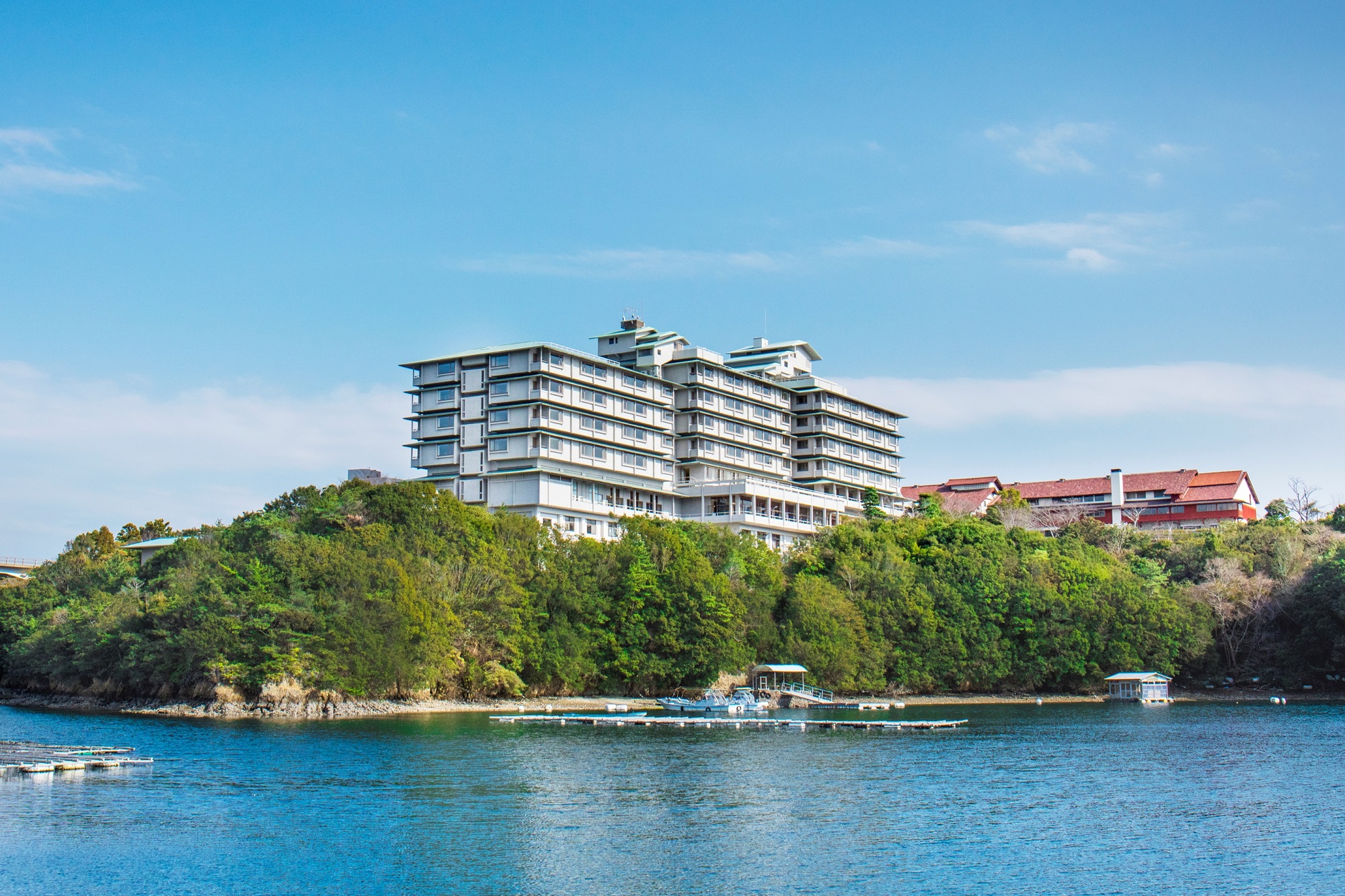Ise Jingu / 伊勢神宮 (Mie)
About Ise Jingu
During the Edo Period (1600-1868), it became popular for people to partake in “okage mairi” processions, during which large groups of people flocked to worship together at Ise Jingu Shrine. During this time, a folk song called the “Ise Ondo” spread nationwide with the lyrics, “I want to visit Ise. I want to see the Ise Road, at least once before I die,” stirring a great longing among the people for Ise. That admiration and reverence have not abated over time. Even today, many people from all over Japan and the world visit Ise, and the Inner and Outer Shrines together receive approximately 8 million visitors a year.

Kotaijingu [Naiku] is the most venerable sanctuary in Japan. Being a jinja [Shinto shrine] dedicated to Amaterasu-Omikami, the ancestral kami [Shinto deity] of the Imperial family. She was enshrined in Naiku about 2,000 years ago and has been revered as a guardian of Japan.
Toyo'ukedaijingu [Geku] is dedicated to Toyo'uke-no-Omikami. Some 1,500 years ago, this kami was summoned and enshrined here, in accordance with a revelation from Amaterasu-Omikami.
Toyo'uke-no-Omikami joins Amaterasu-Omikami in Jingu, as provider of companionship and sacred foods. She blesses us with abundant harvests, and being the guardian of well-being, provides us three essentials of human life: cloth, food and shelter.

When visiting a Shinto Shrine, there are some proper manners and etiquette that should be observed to pay respect to the deities.
To begin with, it is customary to cleanse the hands and mouth in a ritual called "te-mizu" or "cho-zu", which literally means "hand water". Wash your hands and rinse your mouth with water in a simple act of purification before approaching the main sanctuary, to purify both mind and body to feel clear and refreshed when visiting the shrine.
There are two places within the Kotaijingu [Naiku] to perform the cleansing ritual, one called "Temizusha" [ablution font], and a little further in at "Mitarashi" to cleanse with the water from the Isuzu River using two hands.
To purify your hands and mouth at “Temizusha”, take the dipper with your right hand and fill it with water and pour some water over your left hand to rinse it, shift the dipper to your left hand and rinse your right hand, then, take the dipper with your right hand again, and pour water into your left cupped hand and rinse your mouth [*Please refrain from touching the dipper directly with your mouth], finally, rinse your left hand once more and tilt the dipper so that the remaining water trickles down the handle to cleanse it.
*To purify at the “Mitarashi”, use your hands instead of the dipper.
When reaching a Jinja in Jingu, please pray to the enshrined kami in the following manners: take a deep bow twice, then, clap your hands twice, and bow once more deeply.

Getting there and around
by Train
[From Kintetsu Nagoya Station] Take the Kintetsu Limited Express bound for Kashikojima. (approx.80-90min)
[From JR Nagoya Station] Take the JR "Mie" rapid trains bound for Toba on JR Sangū Line. (approx. 90min)
[From Osaka-Namba Station] Take the Kintetsu Limited Express bound for Kashikojima. (approx. 100min)
Disembark at Iseshi Station.
by Bus
Take the Mie Kotsu Bus from the bus stop number 10 in front of Iseshi Station for Geku-mae (in front of Toyo’ukedaijingu) and Naikumae (in front of Kotaijingu).
Recommendations
Jingu / 神宮
Kotaijingu [Naiku] and Toyo'ukedaijingu [Geku] are two main shrines of Ise Jingu. Both are called "Shogu", while the secondary shrines are called "Betsugu". "Sessha" referring to shrines listed in the “Engishiki Jinmyocho” [a list of shrines compiled in 927], and "massha" referring to the shrines that are not listed in the “Engishiki Jinmyocho” but listed in the “Enryaku Gishikicho” (a document compiled in 804 detailing events, rituals, their origins, shrine jurisdictions, etc.). "Shokansha" are other shrines that bear a relation to the Kotaijingu and Toyo'ukedaijingu. Ise Jingu is the center of all Shinto Shrines in Japan, and is dedicated to Amaterasu Omikami, the direct ancestor of the Imperial Family and the great ancestor of all Japanese nationals. It has the largest sanctuary among 80,000 shrines in Japan and is revered as an exceptional shrine among all the shrines in Japan.

Sarutahiko Shrine / 猿田彦神社
Sarutahiko Shrine is dedicated to Sarutahiko Okami, the Kami [diety] of Guidance, with powers to expel evil and guide worshipers in a positive direction.
This shrine has been served by the direct descendants of Sarutahiko Okami since its founding.
Having led Ninigi-no-Mikoto to Takachihonomine ridge, Sarutahiko Okami is revered as the Kami [deity] of guidance and is popularly believed to bring the blessings of safe driving and prosperity for the family business while helping people to avoid the misfortunes that comes from directional bad luck (such as if a house built is facing in a direction that brings bad luck). The shrine precincts are also home to Sarume Shrine, where the ancestral deity of actors, kagura [traditional Shinto music and dance], handicrafts and the repose of souls is revered. The shrine is also popular among women seeking a marriage partner.

Futami Okitama Shrine / 二神輿玉神社
Okitama-no-Okami, the deity enshrined at Futami Okitama Shrine, which is Sarutahiko Okami. It was the land of “Misogi” (a Shinto purification ritual) before visiting Ise Jingu and is famous for the "Meotoiwa" in the precincts. In the sea northeast of Meotoiwa, "Okitama Shinseki", a spirit stone related to Sarutahiko Ogami, is settled. This is a spirit stone greeted by Sarutahiko Ogami when Yamatohime-no-Mikoto devoted himself to Amaterasu Omikami and entered Futamiura in the old days of the deities.
There are many frogs in the precincts that are associated with "returning safely", so please look for them.
It is said that there are benefits to “Misogi”, opening the way, and marriage to get rid of impurities.
Since ancient times, it has been customary to wash oneself in the Futami-ura sea before visiting the Shrine to remove impurities and cleanse the body and mind. Standing in the sea at Futami-ura are "Meoto-iwa", two rocks - one large and one smaller - bound together by a thick "shimenawa" [sacred rope]. These rocks have become famous as symbols of marriage because of the way they look like happy couples standing together. From May to July, see the morning sun rising between the Married Couple Rocks, and from November to January, when the moon is full, see the rising moon.

Information
Maps are in English, Chinese, Korean, French, German, and Italian.
https://www.isejingu.or.jp/en/map/index.html
Travel Recommendations
The best time of the day to visit the Ise Jingu [Shrine] is early in the morning.
A solemn atmosphere of fresh air and silence of the early hours and the small number of visitors makes a perfect visit.
On Oharai-machi Street, one of the streets leading to the Kotaijingu [Naiku], stands "Akafuku Honten", the famous head store of "Akafuku" [rice cakes with red beans paste] of Ise to be enjoyed on the tatami with the view of the Isuzu River.
Accommodations
Shima Kanko Hotel / 志摩観光ホテル(Mie)
731 Shinmei Ago-cho Shima-shi, Mie
Shima Kanko Hotel, located on a hilltop overlooking the peaceful Ago Bay [Ago Wan], has a spiritual mood. Designed by Murano Togo, one of the leading architects in Japan. From over 2,000 years ago, Ise-Shima has been a special land, selected by the S....

